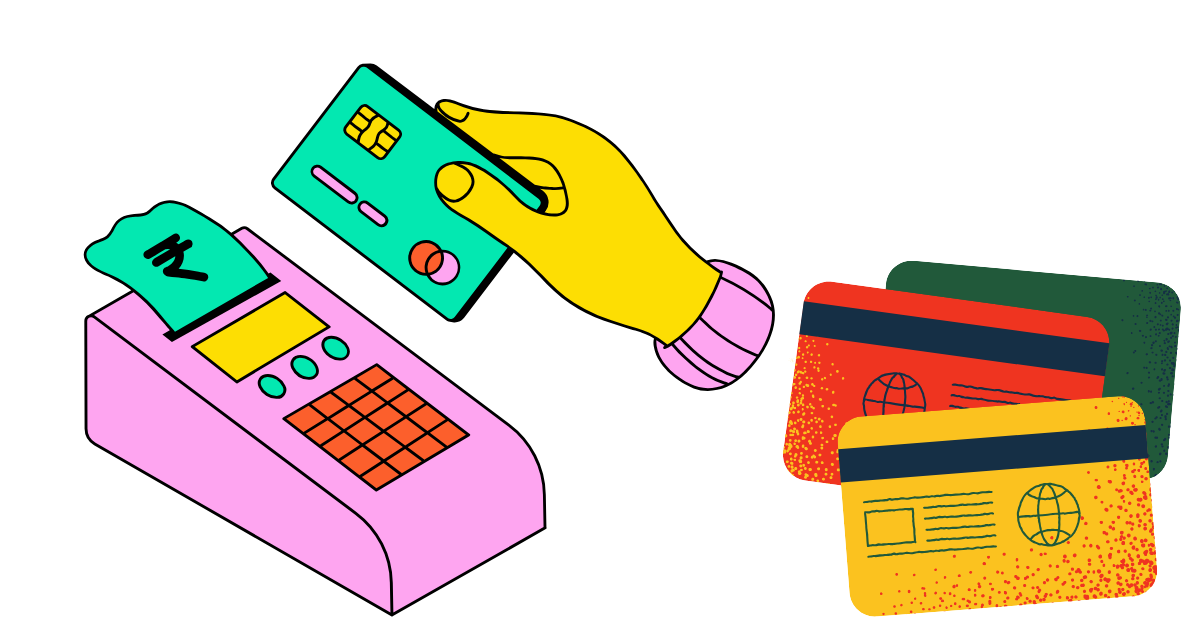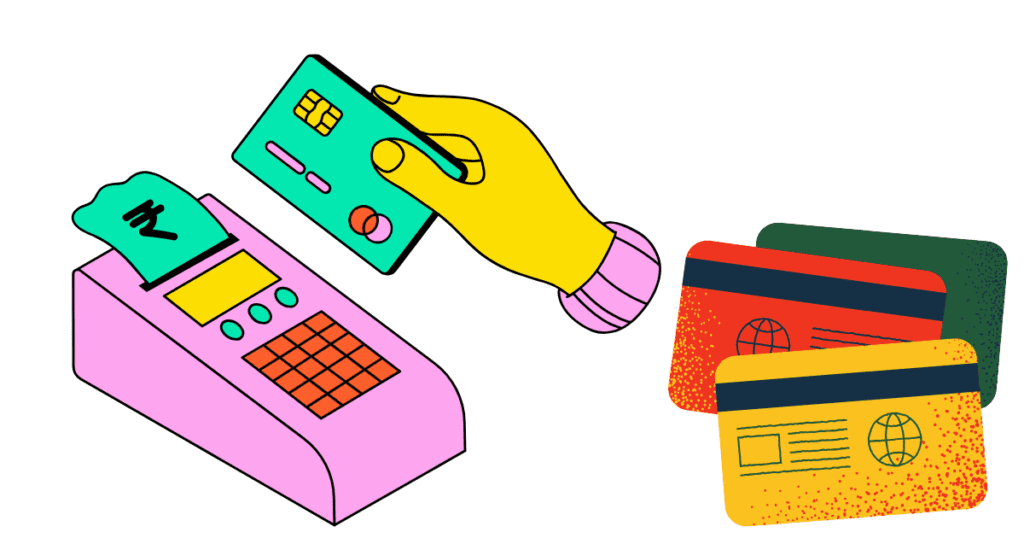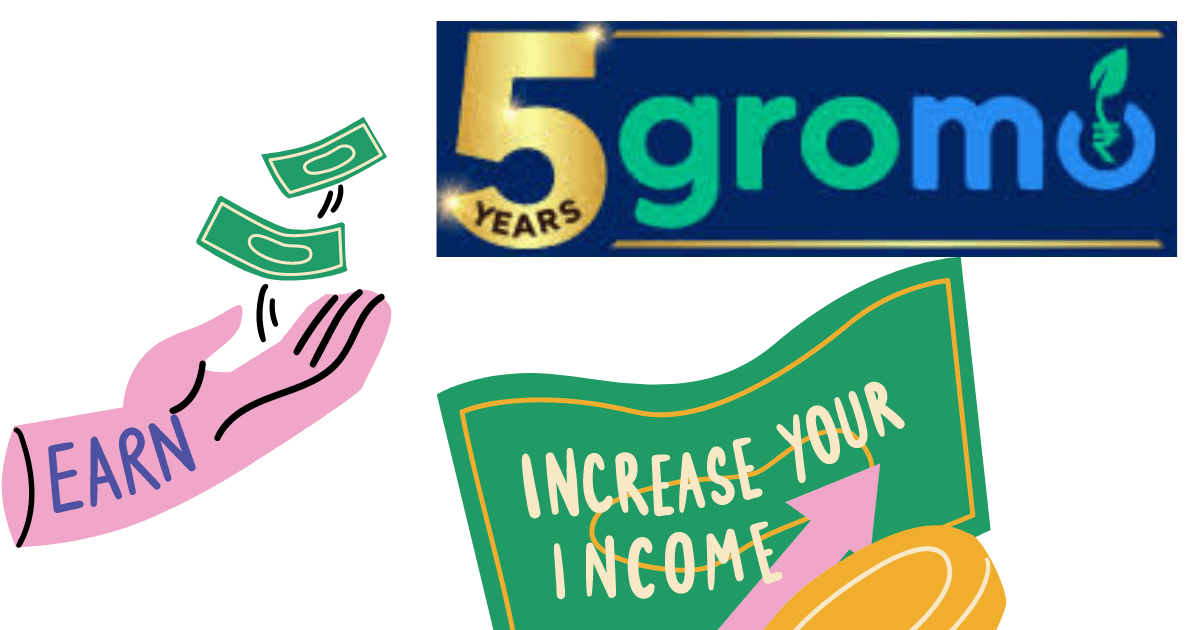Introduction
Applying for a credit card feels like stepping into the world of financial independence, doesn’t it? But, just like any first step, it can seem a bit daunting. Not to worry! We’re here to guide you through this journey, making it as smooth and straightforward as possible. In this step-by-step guide, we’ll cover everything from checking your eligibility to understanding the requirements, and even share some pointers on improving your chances of approval. Let’s dive in and get you closer to your credit card dreams! Lets learn details A Step-by-Step Guide: How to Apply for a Credit Card.
Understanding Credit Cards
Credit cards are not just a convenient tool for making purchases; they’re also powerful financial instruments that can affect your financial health. Essentially, a credit card provides you with a line of credit from the issuer that you can use for purchases, balance transfers, or even cash advances, with the promise that you’ll pay back the borrowed amount. Besides allowing for convenient transactions, responsible use of a credit card can help you build a positive credit history, which is crucial for future financial endeavors like applying for a loan or a mortgage. However, improper use can lead to debt accumulation and negatively impact your credit score. Understanding the significance of credit cards and how they operate can lead you to make more informed decisions when selecting and using them.
Step-by-Step Guide: How to Apply for a Credit Card
Applying for a credit card may seem daunting at first, but breaking down the process into manageable steps can help ease the pressure. Here’s a friendly guide to get you from contemplation to approval.
Step 1: Choose the Right Credit Card
The first step in your credit card journey is to identify why you want a credit card and how you intend to use it. Are you looking to build credit, earn rewards, or maybe save on interest with a 0% intro rate? Understanding your needs will help narrow down the choices. There are various types of credit cards, including rewards cards, balance transfer cards, student cards, and secured cards. Each comes with its own set of features tailored to different needs and spending habits.
Step 2: Check Your Credit Score
Your credit score is a crucial factor in determining your eligibility for a credit card. It’s a numerical representation of your creditworthiness and influences the types of cards you can get approved for and the interest rates you’ll receive. Before applying, check your credit score for free through major credit bureaus or credit score service providers. Knowing your score can help you apply for cards that match your credit profile, increasing your chances of approval.
Step 3: Research and Compare Credit Card Options
With your goals in mind and knowledge of your credit score, it’s time to dive into research. There are countless credit cards out there, each with its own perks, fees, and interest rates. Use online comparison tools to filter cards by type, rewards, APR, and other features. Pay attention to the fine print, including any fees and the rewards redemption process. Ideally, you want a card that aligns with your financial habits and goals without burdening you with unnecessary fees.
Step 4: Gather Required Documents and Information
Before filling out the application, ensure you have all the necessary documents and information on hand. This typically includes personal information (name, Social Security Number, date of birth), contact details, financial information (annual income, source of income, employment status), and sometimes housing information (rent or own, monthly housing payment). Having everything ready can streamline the application process and prevent unnecessary delays.
Step 5: Fill out the Credit Card Application
When you’re ready, it’s time to fill out the credit card application. This can usually be done online through the issuer’s website, which is not only more convenient but also faster in terms of processing and getting a response. Ensure you fill in all the fields accurately to avoid errors that could lead to a denial. Double-check your information before submission, especially entries like your income and Social Security Number.

Step 6: Submitting the Application
After reviewing your application and ensuring everything is correct, go ahead and submit it. Most online applications provide an instant decision or, in some cases, a decision within a few minutes to a few days. For paper applications, the process could take longer, usually several weeks. If you apply online, you might be able to get a temporary credit card number that you can use immediately for online purchases, depending on the issuer.
Step 7: Follow Up and Track Your Application
If you don’t receive an immediate decision, don’t worry. Sometimes, credit card issuers require additional time for review or additional information. In this case, they will typically contact you. You can also proactively follow up on your application status by checking online (if the issuer offers this option) or calling the issuer’s customer service. If your application is approved, congratulations! Your credit card should arrive in the mail within a few weeks. If it’s denied, consider reaching out to the issuer to find out why. This information can help you address any issues before applying for another card.
By breaking down the credit card application process into these manageable steps, you can approach this financial milestone with greater confidence and clarity. Remember, the key to successfully applying for and using a credit card lies in research, preparation, and responsible financial behavior.
Credit Card Application Tips and Tricks
Successfully applying for a credit card doesn’t have to be a daunting task. With a few insider tips and tricks, you can significantly improve your chances of approval. From understanding what issuers are looking for to ensuring you present yourself in the best light, let’s dive into how you can streamline your application process.
Tips for a Successful Application
Here are some key pointers to help you edge closer to credit card approval:
– Check Your Credit Score: Before you apply, it’s crucial to know where you stand credit-wise. Most credit card issuers have specific score requirements. By checking your score beforehand, you can apply for cards that match your credit profile, increasing your chances of approval.
– Reduce Your Debt-to-Income Ratio: Your debt-to-income ratio is a significant factor in the approval process. It’s calculated by dividing your total recurring monthly debt by your gross monthly income. Lower ratios indicate to lenders that you’re less of a risk, so try to pay down existing debts before applying.

– Apply for One Card at a Time: Each application can temporarily ding your credit score due to the hard inquiry lenders perform. Applying for multiple cards at once can compound these effects, so focus on one card that best suits your needs and wait to hear back before trying another.
– Provide Accurate Information: It might seem obvious, but ensure all the information you supply is accurate and truthful. Discrepancies can lead to delays or denials.
– Consider Your Employment Status: Being employed and having a steady income increases your attractiveness to lenders. If you’re between jobs, it might be worth waiting until you’re employed again to apply.
Common Mistakes to Avoid
While knowing what to do is essential, being aware of what not to do can be equally important. Avoid these common pitfalls:
– Applying for the Wrong Card: Research before applying. Ensure the card’s benefits align with your needs and that you meet the eligibility criteria.
– Forgetting to Check Your Credit Report: Errors on your credit report can negatively impact your score. Regularly review your report and dispute any inaccuracies before applying for new credit.
– Ignoring the Terms and Conditions: It can be easy to overlook, but understanding the terms, interest rates, and fees of a credit card is crucial. These factors directly affect how beneficial the card will be for you in the long run.
– Overestimating Your Income: While it might be tempting to stretch the truth, overstating your income can lead to trouble, including potential denial or worse, allegations of fraud.
What to Do if Your Application is Denied
Facing denial after a credit card application can be disappointing, but it’s not the end of the road. Here’s what you can do to bounce back:
– Understand Why: Issuers are required to tell you the reasons for denial. This information can be instrumental in addressing the issues at hand.
– Improve Your Credit Score: If a low credit score was the problem, focus on building it up. Pay your bills on time, lower your credit utilization ratio, and eliminate outstanding debts.
– Consider a Secured Credit Card: These require a cash deposit that serves as your credit limit and are easier to obtain. They can be an effective way to build or rebuild credit.
– Wait Before Reapplying: Take time to rectify the issues that led to your denial before trying again. Rushing into another application can lead to another ding on your credit score.
Understanding Credit Card Eligibility and Requirements
Before you dive into the application process, getting a clear picture of what’s expected can guide your path to approval. Credit card issuancies look at various factors to determine your eligibility and whether you’ll be a responsible cardholder.
Age and Residency Requirements
To apply for a credit card in most countries, you need to be at least 18 years old. However, if you’re between 18-21, you may need to provide proof of independent income or have a co-signer to qualify. Additionally, most issuers require you to be a resident or a citizen of the country where you’re applying for credit.
Credit Score and History
Your credit score is perhaps the most crucial element in the application process. It reflects your past borrowing habits and how reliably you’ve managed credit. While different cards require different scores, having a good to excellent score (typically 670 and above) improves your odds of approval for most mainstream cards.
Credit history length also plays a role. Lenders prefer applicants with longer histories since it provides more data on how consistently you’ve managed credit over time.

Income Stability
Lenders need to know you can afford to pay back what you borrow. Therefore, they’ll ask for details about your income. This doesn’t necessarily mean you need a traditional job, but you do need to prove steady income, which can come from employment, self-employment, or even certain types of benefits.
Debt-to-Income Ratio
We touched on this earlier, but it’s worth reiterating how important your debt-to-income ratio is. A high ratio can be a red flag for issuers, signaling that you might have trouble managing additional credit. Keeping this ratio low not only assists in acquiring new credit but also helps maintain financial health.
By understanding the requirements and preparing accordingly, you can improve your chances of a successful credit card application. Couple this with the tips and insights shared, and you’ll navigate the application process with confidence and ease. Remember, each credit card application is a step towards building or improving your financial footprint, so approach it with the diligence and respect it deserves.
Absolutely, let’s dive into the intricate process of applying for a credit card by understanding the factors that significantly impact credit card approval.
Factors That Impact Credit Card Approval
Applying for a credit card can feel like navigating through a labyrinth for newcomers and seasoned financial veterans alike. However, understanding the factors that affect credit card approval can illuminate the path to success. Let’s delve into these critical aspects.
Credit History and Score
Your credit history and score are among the most vital aspects financial institutions consider during the approval process. Think of your credit score as a financial report card that lenders use to assess your reliability as a borrower. It’s based on your past financial activities, such as loan payments, credit card usage, and payment punctuality. A high credit score suggests you’re a low-risk borrower, significantly boosting your chances of approval. To improve your score, focus on timely bill payments, maintaining low credit card balances, and avoiding new debt.
Income and Employment History
Lenders want assurance that you can repay your credit card debt. Therefore, your income and employment history play crucial roles in your application’s success. A stable job and a steady income demonstrate your ability to manage financial responsibilities, making you a more attractive candidate. When applying, be prepared to provide proof of income and employment, like recent pay stubs or W-2 forms. If you’re self-employed or have an unconventional income source, you might need additional documentation, such as tax returns from the last two years.

Debt-to-Income Ratio
Your debt-to-income (DTI) ratio is a metric lenders use to gauge your financial health. It represents the portion of your monthly income that goes towards paying debts. Generally, a lower DTI ratio is better, as it indicates you have more disposable income relative to your debt obligations. To calculate your DTI ratio, simply divide your total monthly debt payments (include loans, credit card payments, etc.) by your gross monthly income. Aim for a DTI ratio of 36% or lower, as this is often considered favorable by creditors.
Existing Credit Card Relationships
Your existing relationships with financial institutions can influence your credit card application’s outcome. If you have a positive history with a bank – meaning you’ve consistently paid off credit card debts, loans, and kept accounts in good standing – they might be more inclined to approve your application. It’s akin to a trust-based relationship; the better your history with the bank, the more likely they are to trust you with additional credit.
Bank Policies and Regulations
Finally, it’s crucial to acknowledge that each bank and credit card issuer has its own set of policies and regulations governing credit card applications. These criteria can include minimum income levels, specific credit score requirements, and limitations on the number of existing credit cards you can have. Additionally, regulatory laws also influence banks’ decision-making processes. Therefore, it’s important to research and understand the specific requirements of the credit card issuer you’re applying to. This insight can help align your application more closely with their expectations and increase your chances of approval.
Understanding these factors deeply can significantly demystify the credit card application process. Armed with this knowledge, applicants can take strategic steps to improve their financial standing and navigate the application procedure with greater confidence and clarity. Remember, preparation and awareness are your best allies in securing the credit card that best fits your financial needs.
Conclusion
Applying for a credit card doesn’t have to be daunting. With a clear understanding of the process, eligibility criteria, and requirements, you’re well on your way to getting approved. Remember, it’s all about demonstrating to the issuer that you’re a responsible borrower. Once you’ve chosen the right card, gathered your documentation, and submitted your application, it’s a matter of waiting for that approval notification. Welcome to the world of credit cards – use your new financial tool wisely!





















